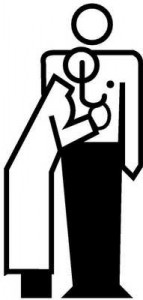 More patients find doctor is not in, NPR asserted on August 30, 2010, as part of its ongoing series covering the primary care shortage in America. To understand why this statement is so important, let’s go back to the definition of “primary care.”
More patients find doctor is not in, NPR asserted on August 30, 2010, as part of its ongoing series covering the primary care shortage in America. To understand why this statement is so important, let’s go back to the definition of “primary care.”
The American Association of Family Physicians says the domain of primary care includes the primary care physician, other physicians who include some primary care services in their practices, and some non-physician providers. Central to the concept of primary care is the patient, according to AAFP. Thus, the first definition of primary care, AAFP says, is “care provided by physicians specifically trained for and skilled in comprehensive first contact and continuing care for persons with any undiagnosed sign, symptom, or health concern.” “Comprehensive” includes the broadest range of services: health promotion, disease prevention, health maintenance, counseling, patient education, diagnosis and treatment of acute and chronic illnesses in a variety of health care settings (e.g., office, inpatient, critical care, long-term care, home care, day care, etc.).
Primary care also promotes, “effective communication with patients and encourages the role of the patient as a partner in health care.”
There are other, useful working definitions of “primary care.” The World Health Organization (WHO) defines primary care as having the goal of achieving, “Better health for all,” with five pillars:
- Reducing exclusion and social disparities in health (achieving universal coverage)
- Organizing health services around people’s needs and expectations
- Integrating health into all sectors
- Pursuing collaborative models of policy dialogue
- Increasing stakeholder participation.
And there’s always the useful Wikipedia definition: “health services that play a central role in the local community.” Here, primary care covers, “patients of all socioeconomic and geographic origins, patients seeking to maintain optimal health, and patients with all manner of acute and chronic physical, mental and social health issues.” Furthermore, “continuity is a key desirable characteristic of primary care…Collaboration among providers is a desirable characteristic of primary care.”
The synthesis of these three definitions is that primary care is accessible, comprehensive, collaborative, communicative, continuous, and people-centered. Primary care is Us. And it’s in short-supply, based on forecasts from the AAFP and other professional societies, based on several demand drivers including citizens aging and living longer with multiple chronic conditions.
Health Populi’s Hot Points: One of my current clients is a highly-ranked, tertiary medical center that gets top grades from groups that rank quality, patient satisfaction and health IT use. They’re already backed-up when it comes to waiting lists for certain kinds of care, akin to what I witnessed when I worked with different regions in the UK’s National Health Service.
As the Accountable Care Act (ACA) is implemented, the supply-side of traditional doctor visits will be even more strained than it is today in many markets, both urban and rural. This is one rationale for seeding and expanding the patient-centered medical home, which includes on the care team more than doctors — remember the definitions above, including “community” and “comprehensiveness.” In this regard, think about community pharmacists, dieticians and nurses in schools, urgent care centers, and nurse visitors to peoples’ homes. The “plumbing” that will enable continuity here and the ability to measure outcomes and quantify quality is the electronic helath record. To promote collaboration and patient engagement, portals and mobile personal health records bolster participatory health.
In the meantime, go directly to Dr. Gerald Grumet, who wrote a landmark article in the New England Journal of Medicine from 1989 titled, Health care rationing through inconvenience: the third party’s secret weapon. Americans who will be newly-covered under the ACA may expect some of that inconvenience in the next few years without innovative forms of primary care that go beyond the traditional doctor’s visit.





 Grateful to Gregg Malkary for inviting me to join his podcast
Grateful to Gregg Malkary for inviting me to join his podcast  This conversation with Lynn Hanessian, chief strategist at Edelman, rings truer in today's context than on the day we recorded it. We're
This conversation with Lynn Hanessian, chief strategist at Edelman, rings truer in today's context than on the day we recorded it. We're